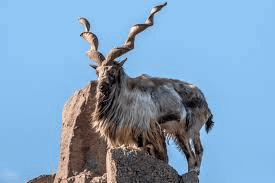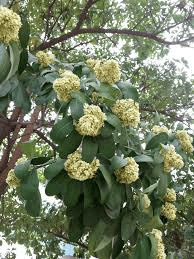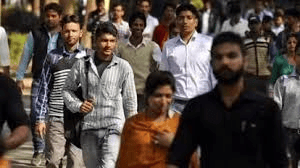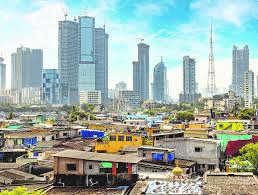UPSC Daily Current Affairs: 4th November 2024 | Current Affairs & Hindu Analysis: Daily, Weekly & Monthly PDF Download
GS3/Environment
Markhor
Source:Money Control

Why in News?
Markhor, recognized as the largest wild goat species worldwide, faces significant threats to its survival in Jammu and Kashmir, necessitating urgent conservation efforts to safeguard its habitat and bolster its population.
About Markhor:
- The markhor is a wild goat native to the mountainous regions of Central and South Asia.
- It is characterized by its dense fur, prominent beard, and distinctive corkscrew-shaped horns.
- As a flagship species, the markhor plays a crucial role in promoting conservation efforts in its mountainous habitat.
- This species thrives in rugged terrains, often found at elevations ranging from 600 to 3,600 meters, in environments such as open woodlands, scrublands, and light forests.
- Markhor is diurnal, meaning it is primarily active during the early morning and late afternoon hours.
Geographical Distribution:
- Markhor can be found in the moist to semi-arid mountain regions of several countries, including Pakistan, India, Afghanistan, Uzbekistan, Turkmenistan, and Tajikistan.
- In Jammu and Kashmir, the markhor population is concentrated in areas such as Shopian, Banihal passes, the Shamsbari region, Kazinag Uri, and the Pir Panjal range in Poonch.
Conservation Status:
- IUCN Status: 'Near Threatened'
- Protected under the Wildlife (Protection) Act, 1972:Schedule I
- Listed in CITES:Appendix I
- The markhor's population is primarily threatened by excessive human encroachment and other biotic factors affecting its habitat.
GS3/Environment
Turtle Wildlife Sanctuary
Source:Business Standard
 Why in News?
Why in News?
The National Green Tribunal has criticized three district magistrates in Uttar Pradesh and the member secretary of the state's pollution control board for granting mining permissions in a careless manner within the turtle wildlife sanctuary.
About Turtle Wildlife Sanctuary:
- The Turtle (Kachhua) Wildlife Sanctuary is situated in the Varanasi District of Uttar Pradesh.
- It is recognized as the first freshwater turtle wildlife sanctuary in India.
- The sanctuary encompasses a 7 km stretch of the Ganga River that flows through Varanasi city, from Ramnagar Fort to Malviya Rail/Road Bridge.
- This protected area was established to help ensure the survival of turtles that are released into the Ganga River in Varanasi.
- The release of turtles aims to facilitate the organic cleaning of half-burnt human corpses that are traditionally disposed of in the river following Hindu final rites.
- To address this issue while respecting cultural sentiments, the Ganga Action Plan promoted the breeding and release of turtles into the river.
- The rationale was to support the dwindling population of Indian softshell turtles by nurturing a robust population through this initiative.
- Hatchlings are bred at a center in Sarnath and released into the Ganga once they are mature enough to thrive in their natural environment.
- Local authorities report that approximately 2,000 turtle eggs are collected annually from the Chambal and Yamuna rivers for breeding purposes.
- The sanctuary also hosts the Gangetic Dolphin, various turtle species, and several fish species, including Rohu, Tengra, and Bhakur.
GS3/Environment
What is Alstonia scholaris?
Source:Nature

Why in News?
Even though Cyclone Dana triggered heavy rain in Kolkata, it did bring relief to those with allergies and asthma, as the heavy showers led to chhatim trees (Alstonia scholaris) shedding flowers that have a strong fragrance.
About Alstonia scholaris:
- Alstonia scholaris, commonly referred to as the blackboard tree, scholar tree, milkwood, or devil's tree, is an evergreen tropical tree belonging to the dogbane family (Apocynaceae).
- In India, it is known as 'Saptaparna' and has historical significance, being referenced in ancient texts like the Charaka and Sushrutha Samhithas.
Distribution:
- This tree is found extensively across the Indian subcontinent, Southeast Asia, and southern China, flourishing in tropical and subtropical climates.
Features:
- Alstonia scholaris typically grows to a height of 10 to 20 meters, with some specimens reaching up to 40 meters.
- The tree's bark is dark grey, and it has a distinctive crown of simple, whorled leaves that are arranged in clusters of seven, which is reflected in its name "saptaparni," meaning "seven leaves."
Flowers:
- It produces small, fragrant, greenish-white flowers that bloom in clusters during the late autumn and early winter.
Uses:
- The bark, leaves, and other parts of Alstonia scholaris have been utilized in traditional medicine to treat various conditions, including respiratory issues, fever, skin disorders, and digestive problems.
- The soft and lightweight wood from the blackboard tree was historically employed for crafting writing slates and blackboards, leading to its common name "blackboard tree."
IUCN status:
- The tree is categorized as Least Concern by the IUCN.
GS3/Science and Technology
Sleep Apnea contributes to Dementia in older adults
Source:Business Today

Why in News?
A recent study conducted by Michigan Medicine has revealed that Obstructive Sleep Apnea (OSA), a prevalent sleep disorder, significantly raises the risk of dementia, particularly in older women.
What is Obstructive Sleep Apnea (OSA)?
- Obstructive Sleep Apnea (OSA) is characterized by repeated interruptions in breathing during sleep, primarily caused by blocked airways.
- This condition leads to episodes of disrupted or restricted breathing, resulting in brief awakenings throughout the night.
- Common symptoms of OSA include:
- Loud snoring
- Gasping for air during sleep
- Morning headaches
- Excessive daytime drowsiness
Risk Factors
- OSA is often found in individuals who:
- Are overweight
- Have large tonsils
- Experience nasal congestion
- According to government data, around 10.4 lakh individuals in India are estimated to be affected by OSA.
- Untreated OSA is linked to several health issues, such as:
- Heart disease
- Diabetes
- Cognitive decline
Recent Findings on OSA and Dementia Risk
- Research indicates a connection between OSA and an increased risk of dementia in older adults aged over 50.
- Women diagnosed with OSA or those who are suspected to have it are at a greater risk of developing dementia compared to men, with the likelihood of dementia diagnoses rising as women age.
- Another investigation by NIMHANS examined the relationship between stroke and OSA.
- The study involved 105 stroke patients over the age of 50, monitored using polysomnography (PSG) to assess brain activity and breathing patterns during sleep.
- Findings revealed that:
- 88% of stroke patients had OSA shortly after their stroke.
- 38% of these patients exhibited severe forms of OSA.
GS2/Governance
Indian Council of Social Science Research (ICSSR)
Source:The Hindu

Why in news?
Employees of the institutions have expressed concerns over the delay in revising their pay scales.
About Indian Council of Social Science Research (ICSSR):
- Establishment:Founded in 1969 as an autonomous organization based on the recommendations of the Prof. V. K. R. V. Rao Committee, also known as the National Income Committee.
- Nodal Ministry:Operates under the Ministry of Education.
- Function:Its primary role is to promote, fund, and support social science research across India.
- Objectives
- Encourage social science research.
- Fund and coordinate research across various disciplines.
- Collaborate with international research organizations.
- Provide policy recommendations informed by research findings.
- Organizational Structure
- Governed by a Council composed of distinguished scholars and policymakers, with support from:
- 24 research institutes.
- 6 regional centers.
- Research Institutes
- Funds various institutes, including:
- Centre for Development Studies (CDS), Thiruvananthapuram.
- Institute for Social and Economic Change (ISEC), Bengaluru.
- Centre for Studies in Social Sciences (CSSS), Kolkata.
- Gokhale Institute of Politics and Economics (GIPE), Pune.
- Key Programs and Initiatives
- ICSSR Data Service: Serves as a national repository for social science data.
- NASSDOC: Provides documentation and library services.
- Organizes workshops and conferences aimed at enhancing research capabilities.
- International Collaboration
- Engages in partnerships with organizations such as UNESCO and the Indian Council of World Affairs for joint projects and scholar exchanges.
PYQ:
[2013] Which of the following bodies is/are not mentioned in the Indian Constitution?
1. National Development Council
2. Planning Commission
3. Zonal Councils
Select the correct answer using the codes given below:
(a) 1 and 2 only
(b) 2 only
(c) 1 and 3 only
(d) 1, 2 and 3
GS2/Governance
Digital Arrest Scams: ED files charge sheet
Source:Indian Express

Why in news?
The Enforcement Directorate (ED) has recently submitted a prosecution complaint under the Prevention of Money Laundering Act (PMLA) against eight individuals implicated in cyber scams. These individuals are accused of defrauding victims through fictitious IPOs and stock investments, predominantly utilizing social media platforms such as WhatsApp, Instagram, and Telegram.
- Additionally, the Indian Cyber Crime Coordination Centre (I4C) has released a new advisory that warns the public about digital arrest scams.
ED files charge sheet in digital arrest scams
- Indian Cybercrime Coordination Centre (I4C)
- I4C is a Ministry of Home Affairs initiative aimed at addressing cyber crime in a unified and effective manner.
- The center focuses on various cybercrime issues, including:
- Enhancing collaboration between law enforcement agencies and stakeholders.
- Improving India's overall capacity to combat cybercrime.
- I4C was inaugurated in January 2020.
- Objectives of I4C
- To serve as the central body for combating cybercrime in the country.
- To bolster efforts against cybercrime affecting women and children.
- To simplify the process for reporting cybercrime incidents and identifying patterns in cybercrime.
- To function as an early warning mechanism for law enforcement agencies to prevent and detect cybercrime proactively.
- To raise public awareness regarding the prevention of cybercrime.
- Major initiatives
- Launch of the National Cybercrime Reporting Portal (NCRP), enabling 24/7 reporting of all types of cybercrime.
- Creation of the Citizen Financial Cyber Fraud Reporting and Management System for the immediate reporting of financial cyber frauds.
- Implementation of a national toll-free helpline number, ‘1930’, to assist citizens in filing online cyber complaints.
- Establishment of the National Cyber Forensic Laboratory (NCFL), a state-of-the-art facility for training and assisting state and union territory investigation officers.
- Development of the 'CyTrain' portal for online courses aimed at building capacity among police and judicial officers on crucial aspects of cybercrime investigation, forensics, and prosecution.
- Promotion of the CyberDost initiative on various social media platforms to enhance cyber awareness among the public.
Digital Arrest Scams Overview
- A digital arrest scam is a form of online fraud where scammers impersonate law enforcement officials to deceive victims. They falsely accuse individuals of criminal activities, applying intimidation tactics to demand money under the guise of avoiding legal repercussions.
- Victims are coerced into making payments to escape supposed arrests.
Mechanics of the Scam
- In these scams, perpetrators pose as officials from agencies like the CBI or Income Tax Department. They initiate contact through phone calls and often transition to video calls on platforms like WhatsApp or Skype to create a false sense of legitimacy.
- Scammers utilize tactics such as displaying a police station background or threatening arrest warrants, accusing victims of financial or legal infringements. Payments are demanded under the pretext of "clearing the victim's name" or as "security deposits" for ongoing investigations.
- Once victims transfer funds, the scammers vanish, leaving them with financial losses.
Current Developments
- In response to Prime Minister Modi's recent call for heightened awareness against the dangers of "digital" arrests, investigative agencies have announced proactive measures to address this rising form of cybercrime.
- The ED has recently filed a charge sheet regarding one such scam, while the I4C has released a new advisory.
PM Modi's Warning on Digital Arrest Scams
During his October 'Mann Ki Baat' address, PM Modi cautioned citizens about scammers impersonating law enforcement officials and conducting 'digital arrests' to extort money from victims. He advised people to "stop, think, and take action" to protect themselves.
ED’s Investigation and Charge Sheet Filing
- The ED has filed a prosecution complaint under the PMLA against eight individuals involved in cyber scams, specifically the 'pig-butchering' scams that lure victims with promises of high returns from stock market investments.
- These scams utilize fake websites and misleading WhatsApp groups that seem to be connected to legitimate financial institutions.
- The ED detailed how fraudsters impersonated officials from agencies like Customs or the CBI, falsely accusing victims of legal breaches to intimidate them into transferring large amounts of money.
- Funds from victims were funneled through "mule" accounts, converted into cryptocurrency, and transferred overseas. Key individuals in the scam recruited directors for shell companies and facilitated the opening of bank accounts, knowingly aiding in money laundering efforts.
- Victims were manipulated through threats of "digital arrests" under the guise of a fabricated "fund regularization process."
I4C Advisory to Citizens
The I4C has issued a public advisory cautioning against digital arrest scams, reminding citizens that legitimate officials do not make demands over video calls. It encouraged individuals to report any suspicious activity through the national cybercrime helpline (1930) or the cybercrime portal.
GS3/Science and Technology
Black hole Triple System
Source:Live Science

Why in News?
A recent study has revealed the first discovery of a "black hole triple" system in space.
About the Black Hole Triple System:
- The system contains a central black hole that is actively consuming a small star that is spiraling in close proximity.
- In addition to this, there is a second star that orbits the black hole; however, this star is situated much farther away.
- Located approximately 8,000 light years from Earth, this discovery prompts further inquiry into the formation of black holes.
- Historically, most identified black holes are part of binary systems, which include a black hole paired with another object such as a star or another black hole.
- This new triple system features one star that completes an orbit around the black hole every 6.5 days, alongside a more distant star that takes about 70,000 years to complete its orbit.
- The system is found in the constellation Cygnus and includes one of the oldest known black holes, V404 Cygni, which is nine times larger than our Sun.
- V404 Cygni is surrounded by two stars, as this black hole did not form from a supernova explosion, which typically ejects outer stars during the event.
- Instead, it originated through a different method known as "direct collapse," where the star collapses in on itself after exhausting its nuclear fuel without undergoing an explosive death.
GS3/Economy
A New Tryst with Destiny: India Could Not Create Mass Prosperity. It Is Not Too Late
Source: Indian Express

Why in News?
Over the past 50 years, the economic paths of China and India have posed intriguing questions for historians.
- China, despite being an autocracy, has seen solid wage increases but poor returns on public markets, with a 13% drop in the last two decades.
- In contrast, India, a democracy, has enjoyed significant public market returns of about 1,300% in the same timeframe, although wage growth has lagged.
- Examining the economic journeys of both nations, their ongoing challenges, and the factors influencing their outcomes is crucial, alongside exploring strategies for India to tackle its distinct issues.
An Analysis of India’s Economic Journey: Progress and Persistent Challenges
- India’s Progress
- Since gaining independence in 1947, India has transformed into the world's largest democracy, despite its deeply stratified society.
- Life expectancy has risen dramatically from 31 years to 68 years, and India has achieved middle-income status.
- Nonetheless, India's quest for social justice is impeded by historical constraints.
- Social mobility, essential for promoting economic growth and equity, is 40% lower in India compared to high-income nations.
- The global success rate for countries moving to high-income status is poor, with only 34 economies reaching this since 1990, illustrating the substantial hurdles India faces.
- India’s Challenges
- The primary challenge for India is not unemployment but employed poverty.
- The distribution of the labor force is stagnant: 45% in agriculture, 14% in construction, 30% in services, and only 11% in manufacturing.
- Many agricultural workers are caught in informal self-employment with very low productivity, a situation termed self-exploitation.
- This stands in stark contrast to China, which successfully transitioned millions from farming to manufacturing jobs.
- Despite having a large labor force and sufficient land and capital, India has failed to achieve the same level of manufacturing growth as China, even with significant foreign investment and economic stability.
- The Importance of Manufacturing for India’s Economic Growth
- Manufacturing is vital for India's development as it can create jobs across various skill levels, boost productivity, and stimulate overall economic activity.
- In China, manufacturing lifted millions out of poverty, allowing them to shift from agriculture to factory jobs with better wages and working conditions.
- Conversely, only 11% of India’s labor force is engaged in manufacturing, which has resulted in slow wage growth and high poverty rates, despite economic expansion.
- Less Reliance on Agriculture
- Expanding the manufacturing sector could reshape India’s labor dynamics by reducing dependence on low-productivity agriculture and creating opportunities for unskilled and semi-skilled workers.
- The aim would be to increase manufacturing employment to 25% of the labor force by 2035, necessitating policy reforms, infrastructure improvements, and regulatory changes to support industrial growth.
Structural Constraints Hindering Manufacturing Growth
- Regulatory Barriers and Regulatory Cholesterol
- A significant challenge for manufacturing is the cumbersome regulatory environment, often referred to as regulatory cholesterol.
- This complex landscape disproportionately impacts small and medium enterprises (SMEs), which face numerous compliance requirements and licensing hurdles.
- While these regulations aim to ensure safety and standards, they often lead to high compliance costs that deter formalization and limit growth and productivity.
- Informal Employment and Limited Scale of Small Enterprises
- A large segment of India's manufacturing is dominated by informal enterprises, which are usually small-scale and lack resources for technological upgrades, workforce training, or access to formal financing.
- The informal nature of these businesses hampers productivity improvements and the realization of economies of scale necessary for global competitiveness.
- Large companies that can employ thousands are rare in India's manufacturing landscape, leading to a fragmented sector unable to generate widespread employment.
- Infrastructure and Skill Gaps
- While infrastructure and skills have historically been viewed as major obstacles to manufacturing, recent advancements have mitigated these issues.
- Significant investments in infrastructure have enhanced transportation networks, energy supply, and logistics, essential for effective manufacturing operations.
- Skill development initiatives, such as the National Education Policy (NEP) 2020, aim to improve educational quality and employability through holistic learning and vocational training.
- Despite these improvements, skill mismatches remain, with gaps between workers' qualifications and the needs of modern manufacturing jobs.
- Low Levels of Investment in Technology and Innovation
- India's manufacturing sector faces a fundamental constraint due to low investment in technology and innovation.
- Many firms, particularly SMEs, operate with limited technological resources, which hampers their global competitiveness.
- In contrast to China, where technological advancements have driven rapid manufacturing growth, India remains heavily reliant on labor-intensive, low-productivity activities.
India’s Path Forward to Realising the Full Potential of India’s Manufacturing Sector
- Balancing Democracy and Economic Development
- India's unique challenge lies in reconciling democratic principles with economic growth.
- While China prioritized rapid industrialization over personal freedoms, India's democratic setup necessitates a more balanced approach.
- A realistic goal is to increase manufacturing employment to 18-20% of the workforce over the next decade.
- Domestic Consumption as a Growth Engine and Strategic Manufacturing Policy
- India's vast domestic market represents a growth opportunity that has historically been underutilized by China, which focused on exports and investment.
- India needs to leverage this market to boost manufacturing by adopting "Make for India" policies that cater to local demand while establishing a foundation for export competitiveness.
- For instance, the automotive sector in India has thrived by supporting both domestic and international manufacturers, creating a competitive landscape that fosters supply chain development and export opportunities.
- Infrastructure Investments
- Continued infrastructure investments are crucial, particularly in enhancing logistics and transportation networks to lower manufacturing costs.
- Expanding vocational training programs to close skill gaps and align educational outcomes with industry needs is essential.
- Policies that promote innovation, research, and technology adoption in manufacturing can assist India in climbing the value chain and competing on a global stage.
Conclusion
- Despite its achievements as a democracy, India has yet to realize its potential for widespread prosperity.
- However, recent reforms and a focus on manufacturing present opportunities for India to address its economic challenges.
- By fostering high-productivity firms and expanding job opportunities in manufacturing, India can pave the way for sustainable economic growth.
GS3/Environment
What are the Major Challenges Faced by Indian Cities?
Source:Indian Express

Why in news?
With October 31 recognized globally as World Cities Day, this year's theme is "Youth Climate Changemakers: Catalysing Local Action for Urban Sustainability". It aims to bring attention to the pressing issues affecting urban centres worldwide, particularly in India. With over 40% of India’s population residing in urban areas across approximately 9,000 towns, Indian cities face unique challenges exacerbated by rapid urbanization, socio-economic inequalities, and climate threats.
Unique Urbanisation Pathway in India:
- India's urbanization differs significantly from Western nations, as it is largely driven by poverty rather than industrialization and economic growth.
- Economic hardships compel rural populations to migrate to cities, often resulting in inadequate infrastructure and job opportunities.
- The COVID-19 pandemic revealed infrastructure deficiencies, with reverse migration stressing rural areas ill-equipped for returning populations.
Primary Challenges of Indian Urbanisation:
- Outdated Spatial Planning:
- Urban planning in India frequently fails to meet contemporary needs, focusing more on capital growth than on human-centric development.
- Many spatial plans do not adequately address the increasing population and housing demands.
- Deindustrialization and Employment:
- Post-1980s deindustrialization in major cities like Ahmedabad, Delhi, and Mumbai has led to significant job losses.
- This has driven many displaced workers into peri-urban slums, where nearly 40% of India’s urban population resides.
- Informal employment dominates, with 90% of jobs lacking security and sufficient working conditions.
- Environmental Challenges and Climate Impact:
- Climate Vulnerabilities:
- Indian cities, especially in the National Capital Region (NCR), suffer from severe air pollution, urban flooding, and the urban heat island effect.
- Among India’s ten most polluted cities, eight are located in the NCR, posing significant health risks and diminishing quality of life.
- Urban Flooding and Extreme Heat:
- Increased impervious surfaces and inadequate drainage systems make cities vulnerable to flooding.
- Intensive construction amplifies heat, adversely affecting public health and productivity.
- Climate Vulnerabilities:
- Social Inequality & Segregation:
- Growing Inequality:
- Disparities in socio-economic status are widening, with luxury housing projects like DLF's "The Dahlias" in Gurugram offering apartments starting at ₹100 crore, while millions lack basic shelter.
- Community Segregation:
- Rather than erasing social and religious differences, urban areas are increasingly becoming segregated, leading to community isolation and tensions.
- Growing Inequality:
- Governance & Decentralisation Issues:
- Limited Local Authority:
- Despite the 74th Constitutional Amendment aimed at decentralizing urban governance, most cities lack autonomy over urban planning and essential functions.
- Only a few cities have fully implemented more than three of the 18 mandated functions outlined in the 12th Schedule.
- Funding Constraints:
- Urban areas receive minimal financial support from intergovernmental transfers, with only 0.5% of GDP allocated to cities, restricting their capacity for sustainable development and infrastructure enhancements.
- Limited Local Authority:
Conclusion:
- Indian cities are confronted with complex, interconnected challenges that necessitate coordinated national interventions and strengthened local governance.
- To foster inclusive, resilient, and sustainable urban environments, comprehensive solutions including updated spatial planning, adequate resource allocation, and localized climate action are essential.
- Addressing these issues is critical for ensuring a more equitable future for India’s urban population.
GS3/Science and Technology
Hydrogels
Source:Nature

Why in News?
A recent discovery by researchers from the Department of Chemical Sciences at Bose Institute unveiled a novel method to create hydrogels using small protein fragments consisting of just five amino acids derived from the SARS-CoV-1 virus. This innovation holds promise for enhancing targeted drug delivery while minimizing associated side effects.
About Hydrogels:
- Hydrogels are three-dimensional structures formed by hydrophobic polymers that result from the crosslinking of water-soluble polymers.
- They have the ability to hold a significant amount of water within their framework without altering their original structure, providing them with flexibility and swelling characteristics.
- These materials are classified as "smart" because they can adapt their structure based on environmental stimuli such as temperature, pH levels, salt concentration, or water content.
What is SARS?
- Severe Acute Respiratory Syndrome (SARS) is a viral respiratory illness caused by the SARS-CoV-1 virus.
- This virus is transmitted through the air and can spread via tiny droplets of saliva, similar to how common colds and influenza are transmitted.
- SARS can also be contracted indirectly by touching surfaces contaminated by an infected person.
- Common symptoms of SARS include persistent high fever, chills, headaches, and body aches.
- Currently, there is no specific treatment established for SARS.
|
38 videos|5264 docs|1112 tests
|
FAQs on UPSC Daily Current Affairs: 4th November 2024 - Current Affairs & Hindu Analysis: Daily, Weekly & Monthly
| 1. What is the significance of the Markhor in wildlife conservation? |  |
| 2. What measures are taken at the Turtle Wildlife Sanctuary to protect endangered turtles? |  |
| 3. How does Alstonia scholaris contribute to traditional medicine? |  |
| 4. What is the link between sleep apnea and dementia in older adults? |  |
| 5. What are the primary challenges faced by Indian cities in terms of urbanization? |  |
















